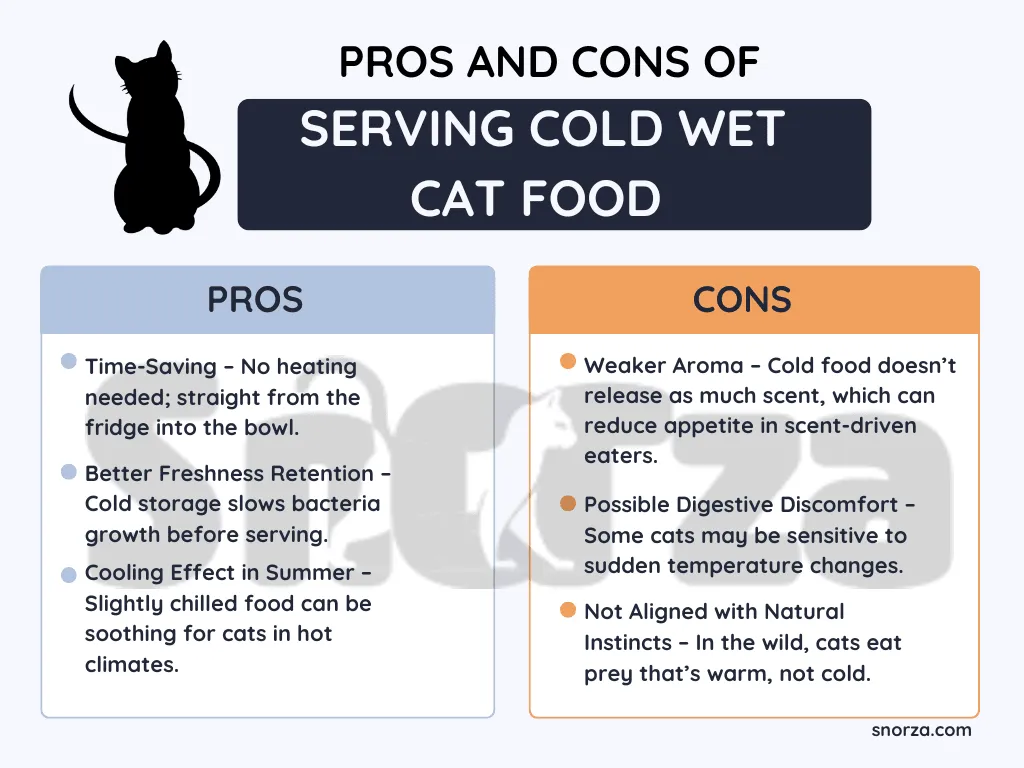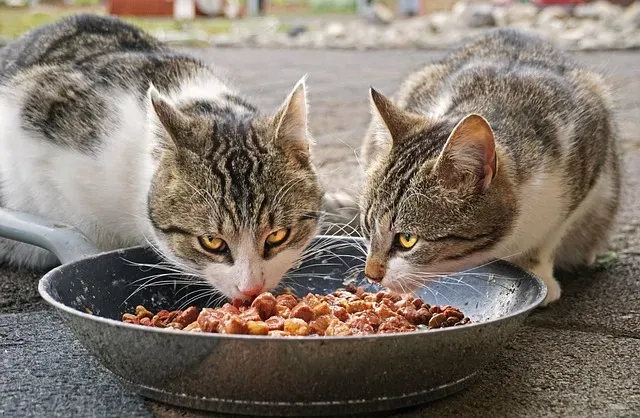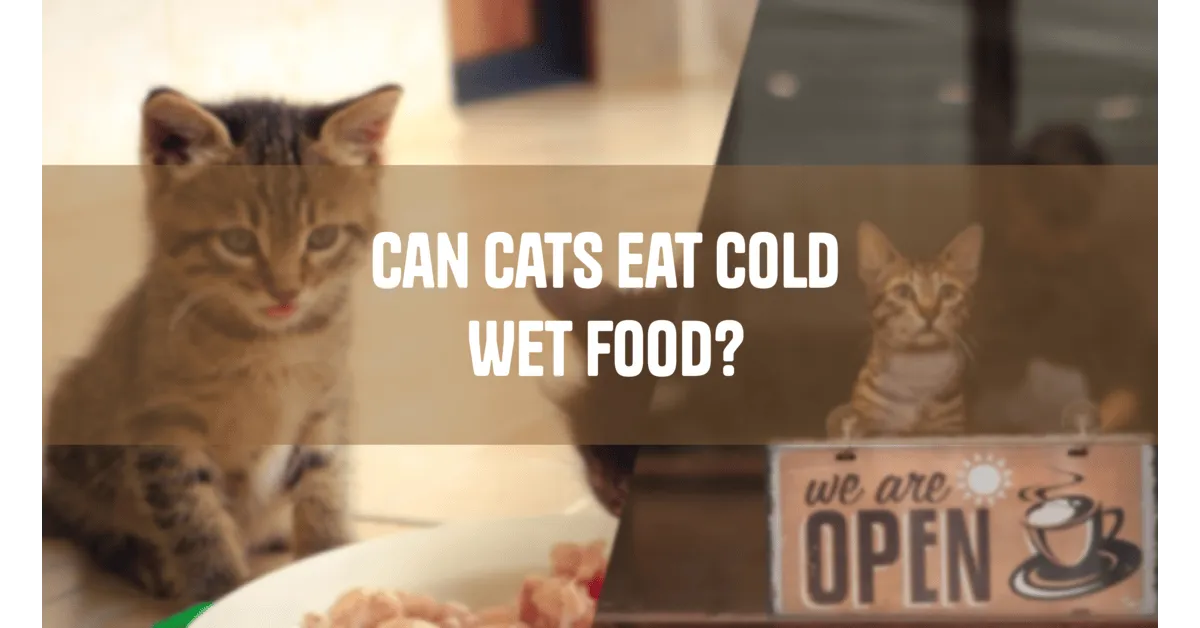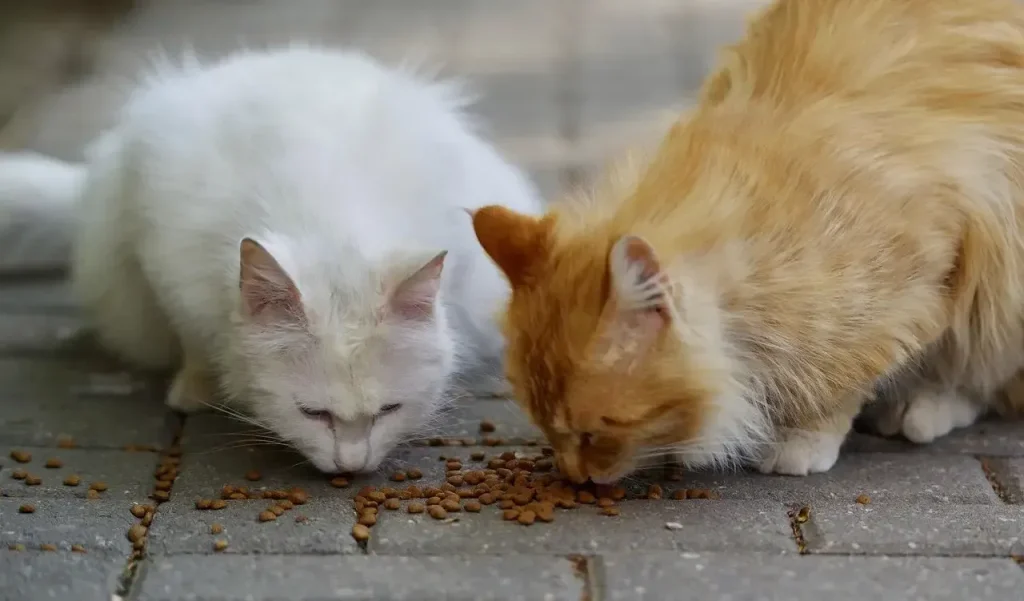Many cat owners wonder if it’s okay to feed their cats cold wet food straight from the fridge. While it’s not harmful, it may affect your cat’s appetite, digestion, and comfort. This guide explores whether cold food is safe, what cats prefer, and how to serve wet food the right way.
Table of Contents
Is It Safe for Cats to Eat Cold Wet Food?
In most cases, it’s not dangerous for cats to eat cold wet food straight from the fridge, but it’s not always ideal.
What vets say:
- For healthy adult cats, cold wet food won’t cause serious harm.
- However, some cats especially kittens, seniors, or those with sensitive stomachs may find cold food harder to digest.
Potential concerns:
Preference mismatch: Cats instinctively prefer food close to body temperature (100 -102°F).
Reduced appetite: Cats are smell-driven eaters, and cold food has less aroma.
Digestive sensitivity: Sudden temperature differences may cause mild stomach upset in some cats.
| Topic | Details |
|---|---|
| Safety | Cold wet food is safe for cats to eat. No health risks from temperature. |
| Preference | Some cats may dislike cold food due to reduced smell and flavor. |
| Sensitive Stomachs | Rarely, cats with sensitive stomachs or dental issues may react poorly. |
Pros and Cons of Serving Cold Wet Cat Food
Feeding your cat cold wet food might seem harmless, but it affects taste, smell, and digestion more than many owners realize. Here’s a quick breakdown:

Quick tip: If your cat refuses cold food, try warming it slightly to around body temperature (about 100°F) to make it more enticing.
Best Practices for Serving Wet Cat Food

Serving wet cat food the right way can make a big difference in your cat’s appetite, digestion, and overall health. While it may seem simple, how you store, serve, and handle wet food can affect both safety and your cat’s enjoyment.
| Practice | What to Do | Why It Matters |
|---|---|---|
| 1. Serve at Room Temperature | Warm refrigerated food slightly (5-10 sec in microwave or warm water). Always test temperature. | Mimics natural prey temperature; improves aroma and appeal. |
| 2. Limit Time Left Out | Discard uneaten food after 1-2 hours, especially in warm environments. | Prevents bacterial growth and food spoilage. |
| 3. Use a Clean Dish Every Time | Wash dishes daily with hot, soapy water or in the dishwasher. | Reduces risk of bacteria; keeps food tasting fresh. |
| 4. Store Opened Cans Properly | Refrigerate in airtight containers or can covers. Use within 2-3 days. | Maintains freshness and prevents odor contamination. |
| 5. Don’t Mix Old with New | Always serve fresh food. Don’t combine leftovers with new portions. | Prevents contamination and keeps food safe. |
| 6. Watch Your Cat’s Preferences | Adjust food temperature or texture if your cat refuses to eat. | Helps with picky eating and identifies potential digestive issues. |
Would you like to know about Halloween cats
Conclusion: Should You Feed Your Cat Cold Wet Food?
While cold wet food isn’t necessarily harmful, it might not be ideal for every cat. Warming it slightly can enhance its smell, mimic natural prey temperature, and improve your cat’s enjoyment especially for picky eaters or those with sensitive stomachs. Always pay attention to your cat’s preferences and health signals, and when in doubt, consult with your veterinarian.
FAQs About Cold Wet Food for Cats
Can a cat get sick from eating cold food?
Not usually, but some cats may experience mild digestive upset, especially if they have sensitive stomachs.
Can cold wet food make a cat throw up?
Yes, in some cases. Sudden temperature changes can irritate the stomach and trigger vomiting in sensitive cats.
Can cats handle cold food?
Most healthy cats can handle it, but many prefer food at room temperature for better smell and taste.





